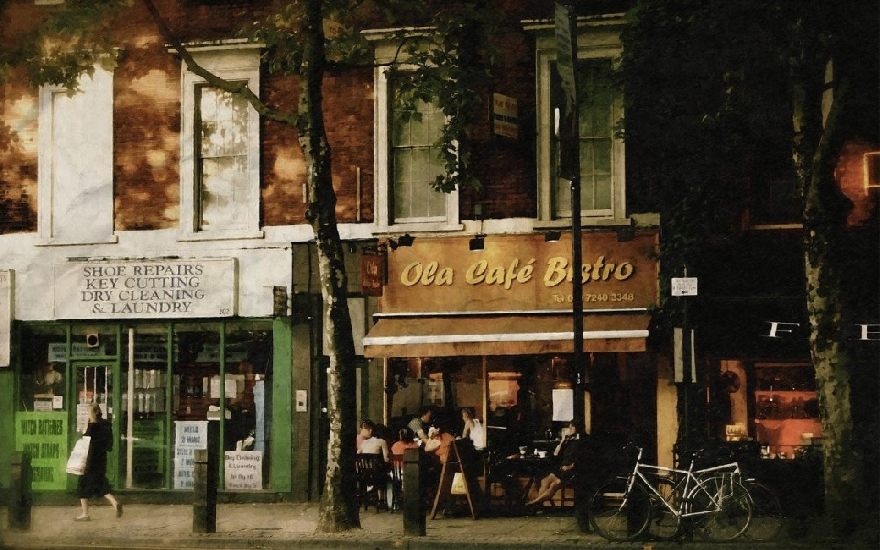Ramen as a traditional food in Japan
Ramen is a popular and traditional dish in Japan that consists of wheat noodles, broth and various toppings. Ramen originated in China but has been adapted and developed over time to suit Japanese tastes. Today, there are many regional variations of ramen, varying in the type of broth, noodles, and ingredients. This blog post will introduce you to some of the most famous and delicious ramen styles that you should definitely try when you visit Japan.
The first style of ramen is tonkotsu ramen. Tonkotsu means pork bones and refers to the creamy and rich broth made from slow-cooked pork bones. The broth has a milky color and an intense flavor, often seasoned with soy sauce or miso. The noodles are usually thin and firm and are served with slices of pork (chashu), spring onions, pickled ginger (beni shoga), sesame seeds and sometimes a soft-boiled egg (ajitsuke tamago). Tonkotsu ramen is particularly popular in Kyushu, the southernmost main island of Japan, where there are many famous ramen restaurants.
The second style of ramen is shoyu ramen. Shoyu means soy sauce and refers to the clear and salty broth made from chicken or vegetable broth and soy sauce. The broth is brown in color and has a simple but umami-rich taste. The noodles are usually medium thick and curly and are garnished with slices of chicken or pork, spring onions, bamboo shoots (menma), seaweed (nori) and often a hard-boiled egg. Shoyu ramen is the classic style of ramen common throughout Japan, but especially in Tokyo, where there are many variations.
The third style of ramen is miso ramen. Miso is a fermented soybean paste that has a spicy and nutty taste. The broth is made from chicken or vegetable broth and miso and is yellowish or reddish in color. The broth is often thick and has a strong and complex taste. The noodles are usually thick and wavy and served with slices of pork, spring onions, corn, butter, bean sprouts and sometimes a soft-boiled egg. Miso ramen is the youngest style of ramen, having only been invented in the 1960s in Hokkaido, the northernmost main island of Japan. But it is now popular all over Japan.
Ramen is indeed an extremely popular and traditional food in Japan. Although ramen originated in China, it has undergone a unique and diverse culinary evolution in Japan. Here is some important information about ramen in Japan:
-
Origin: Ramen was first introduced to Japan in the 19th century when Chinese immigrants brought the idea of noodle soups with them. However, the Japanese version of ramen has changed significantly over time and has become a culinary tradition in its own right.
-
Variety: Japan offers an amazing variety of ramen styles, with almost every region having its own variation. Some of the most popular styles are tonkotsu (pork bone broth), shoyu (soy sauce), shio (salt), miso (soy bean paste), and tsukemen (noodles and broth served separately, for dipping). One of the most fascinating features of ramen in Japan is its regional diversity. Different regions have developed their own unique ramen styles. These include Sapporo ramen from Hokkaido, Tonkotsu ramen from Kyushu, Shoyu ramen from Tokyo, and miso ramen from the Tohoku region, to name a few. Each region has its own distinctive ingredients and broths.
-
Ingredients: Ramen generally consists of four main components: noodles, broth, toppings and condiments. The noodles can vary, ranging from thin to thick, curly noodles. The noodles in ramen vary in texture and thickness depending on region and taste. Typically they are made from wheat flour, water and alkali. The broth is usually simmered for hours to develop a rich flavor. Toppings can include pork, eggs, nori seaweed, bamboo shoots and much more. Spices such as ginger, garlic and sesame oil are often added.
- Toppings: Ramen is often served with a variety of toppings, including slices of pork (chashu), bamboo shoots, egg, nori seaweed, green onions, and more. The choice of toppings depends on individual taste.
-
Preparation: The preparation ofRamen requires a lot of skill and care. Both the noodles and the broth must be prepared carefully to achieve the desired quality. The broth can simmer for up to 24 hours, depending on the style. The broth is a key element of ramen and can be prepared in a variety of ways. There are mainly four types of broths: tonkotsu (pork bone), shoyu (soy sauce), miso (soybean paste), and shio (salt). Each broth has its own taste and character.
-
Popularity: Ramen restaurants, also called Ramen-Ya, are common in Japan. They offer a wide range of ramen styles, and there are often queues at popular ramen-ya. Ramen restaurants are common throughout Japan, ranging from upscale establishments to humble street stalls. There are even ramen museums that showcase the history and diversity of ramen in Japan.
-
Culture: In Japan, eating ramen is a serious matter, and there are even magazines and television shows dedicated exclusively to ramen. Choosing the right ramen shop can lead to lively discussions. Ramen is a popular quick meal in Japan and is enjoyed by people of all ages. It has also become popular in other parts of the world. Eating ramen in Japan is often accompanied by rituals and etiquette. For example, it is customary to eat the noodles with the help of chopsticks and a spoon, with the loud slurping of the noodles being considered a sign of enjoyment.
Ramen is not just a simple noodle dish, but a cultural symbol in Japan. The preparation and enjoyment of ramen has a long history and has become an important part of Japanese cuisine. Ramen is not only a delicious dish, but also an important part of Japanese food culture. It is a diverse and adaptable dish that has evolved over time and in different regions of Japan.
As you can see, there are many different types of ramen in Japan, each with their own character and charm. Ramen is a simple but delicious dish that you can customize depending on your taste and mood. If you are a fan of noodles or just want to eat something warm and hearty, you should definitely try ramen. You won't regret it!




















